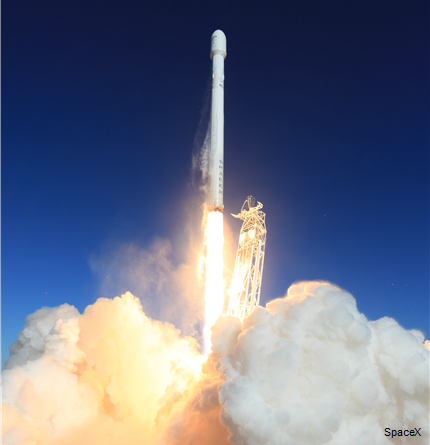SpaceX gets closer to launching military, spy satellites
The Elon Musk-led company is nearing certification that would put it into competition with Lockheed/Boeing’s ULA.
A successful launch from last year has moved Space Exploration Technologies Corp., known as SpaceX — the first private company to return a space craft from low-Earth orbit — closer to being certified to launch military and national security satellites.
SpaceX has been seeking an Evolved Expendable Launch Vehicle (EELV) certification since June 2013, according to the Air Force Space Command. The command’s Space and Missile Systems Center (SMC) and SpaceX signed a Cooperative Research and Development Agreement, setting certification requirements that SpaceX must pass in order to be considered for launching critical and high-cost National Security Space (NSS) payloads. Military and intelligence satellites tend to be larger than commercial satellites.
SpaceX’s Sept. 29, 2013 launch of the civilian satellites Cassiope, CUSat, Dande and Popacs has been determined to count toward a certification requirement that would allow SpaceX to deliver military and spy satellites. SpaceX must perform at least three successful flights of a common launch vehicle configuration as a requirement.
SMC is still assessing two other Falcon 9 launches that occurred on Dec. 3, 2013 and Jan. 6, 2014 to see if they apply to certification requirements. The certification process for each flight takes about three months.
"This flight represents one of many certification requirements jointly agreed to between the Air Force and SpaceX," Lt. Gen. Ellen Pawlikowski, SMC commander, said of the September launch.

SpaceX’s rocket, the Falcon 9 v1.1, must also pass several technical reviews and audits, as well as independent verification and validation of the launch vehicle’s manufacturing processes and ground systems.
The Falcon 9 series is designed as a two-stage rocket for transporting satellites and the Dragon spacecraft into orbit – and eventually to carry astronauts in the future. According to SpaceX, the two-stage configuration reduces the number of separation events, allowing the vehicles to complete missions in spite of engine shutdowns. The rocket has been used to launch commercial and research satellites, as well as delivering and returning cargo to the International Space Station on behalf of NASA.
Gen. William Shelton, commander of Air Force Space Command, has told SpaceNews that he has not seen anything from the three flights that would prevent formal certification.
This is good news for SpaceX, which has been trying to break into the EELV market. Elon Musk, CEO of SpaceX and Tesla Motors, has been arguing that competition will bring launch prices down.
The market is currently dominated by United Launch Alliance, a joint venture of Lockheed Martin and Boeing. ULA is currently the sole provider of medium- and heavy-lift rocket launches, and has launched more than 75 satellites under the EELV program -- the latest being a GPS IIF satellite launched on Feb 20.
Certification does not necessarily mean that competitors will be guaranteed launch contracts – SpaceX and ULA will still have to compete with each other in a newly-created bidding process. According to a General Accountability Office report, DOD expects to spend about $19 billion to acquire launch services from 2013 to 2017.